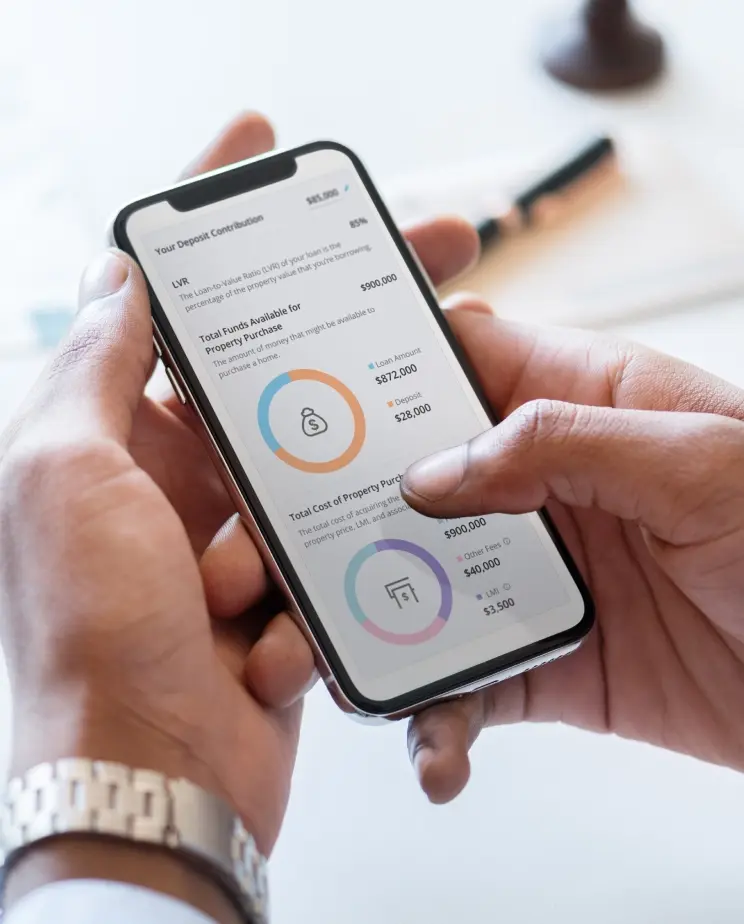Yes, you are allowed to live in your rental home. However, when you decide to make an investment property your principal place of residence (PPOR), you must notify the Australian Taxation Office (ATO).
A PPOR is the address where you live permanently. This residence does not generate any money for the owner, and it is also tax-free. You may not claim tax deductions for the costs of owning a PPOR.
Investment properties, on the other hand, generate revenue, allowing the investor to claim tax deductions for certain expenses. Among them are:
- Council rates
- Interest on the home loan (used to buy the property)
- Repairs and maintenance
- Property management fees
- Depreciation on fixtures and fittings
After converting an investment property to a PPOR, an investor will no longer have to declare rental income and cannot claim any deductions. Let’s look at the steps for making the change.
Elevate Your Investment Game With The 360° Home Loan Assessor
- Determine the right deposit required for your next investment property
- Ensure complete transparency on additional expenses related to property investment
- Explore interest-rate options based on your situation
Get Started The Steps In Making The Switch From Investment Property To A PPOR
If you intend to convert your investment property into a PPOR, you should:
- Obtain professional guidance from your accountant, who can explain the tax ramifications of the conversion in detail, considering your circumstances.
- Notify the ATO of the change and make the required modifications so that you can move into the property and claim any applicable deductions if you choose to continue renting out a portion of it.
- Keep accurate documents with exact dates about when the property was finally sold to compute CGT.
Converting your investment to your PPOR has advantages and disadvantages.
| Pros | Cons |
|---|
| Moving into your own property usually means an end to paying rent elsewhere. | You will no longer have rental income from the property. |
| You will reduce your CGT liability when the property is sold. | You cannot claim tax deductions for rates, home loan interest, repairs, etc, on a property that is your PPOR (except a portion of them if you rent out a room or granny flat).
|
| You can continue to claim some deductions if you continue to rent out a part of the property. | A part of any profit on sale of the property will still be subject to CGT. |
To wrap up, the best way to convert your investment property into a PPOR depends on your personal circumstances. It is always advisable to get counsel from qualified professionals who can provide reliable statistics and relevant information.
In most cases, the biggest concern will be how converting your investment to a PPOR will affect your tax position. There are multiple tax implications to consider.
Tax Implications
The tax ramifications are by far the most important consideration when converting an investment property to a primary residence. Significant adjustments to tax deductions and capital gains tax are included.
Tax Deductions
Declaring your investment property as your primary residence may eliminate your ability to claim tax deductions for council rates, home loan interest, repairs and upkeep, and depreciation on the property. If you continue to rent out a portion of the property, you may be able to deduct some of these costs.
If you decide to go this route, you’ll need to see an accountant or a quantity surveyor to make sure you’re claiming the right amount of expenses.
Capital Gains tax
The impact on capital gains tax (CGT) is the most significant consequence of changing a property from an investment to a main residence. The amount of time the property has been owned, rented out, and used as your dwelling will influence the calculation.
The ATO requires that any profit on the sale of an investment property be revealed and declared, even if it was the primary residence for the entire time it was owned. This is a capital gain. After any CGT discount has been applied, the gain must be recorded on an investor’s income tax return. It will be taxed at the taxpayer’s marginal rate. If you sell your home within 12 months of when you first used it to produce income, you cannot use the CGT discount.
In the case of a residence that was an investment property for part of the time it was owned and a primary residence for the rest, CGT is charged on a pro-rata basis. For example, you can exclude 75 percent of the sale profits from GGT if you sell a 4-year-old property for a profit of $100,000 and rent it out for a year before living in it for three years (3 divided by 4 x 100).
In this scenario, the non-exempt capital gain would be $25,000. This would be reduced to $12,500 after applying the 50% discount, and $12,500 would be disclosed on your tax return, to be added to your other income and taxed at your marginal rate.
Could I Be Exempt From Capital Gains Tax?
There are certain circumstances in which revenue from the sale of a property may be exempt from CGT. Some of the CGT exemptions relate to living in your investment property. For example, if a property is considered your primary place of residence, you’re entitled to a full exemption.
There are also exemptions from CGT if you consider more than one property to be a primary place of residence within a six-month period. To be eligible, you must meet one of the following conditions:
- The old property was your primary residence for at least three continuous months in the 12 months before you they sold it.
- You did not use the property to generate assessable income in any part of the 12 months prior to selling.
- If your rental property becomes your main residence and you declare it your PPOR, you can no longer claim the property’s expenses as a tax deduction.
Different scenarios for exemption:
- If you move out of a PPOR and rent it out, you’re exempt from CGT for a period of up to six years. If you move back into the property and afterwards move out again, then a new six-year period commences from the time you last moved out.
- If you move out of a property that was genuinely your main residence prior to becoming a rental property, you can choose to continue to treat it as your main residence for CGT purposes for up to six years after you stop living in it. This is known as the absence rule, ‘continuing main residence rule’ or ‘six-year rule’. However, you can’t use the CGT main residence exemption on any other property for the same period.
- Where the main residence is vacated and not rented out (and no other main residence declaration is made in respect of another property), the property will maintain its exemption status indefinitely.
People move into their investment properties for different reasons and with different arrangements. These various arrangements can affect your tax position and your obligations in different ways. It’s easy to get confused. Let’s look at some common questions.
Can I Move Back Into My Investment Property To Renovate?
Yes, you can move back in to renovate. It’s essential to think about the practical aspects of moving into your rental property to do this. You will be able to move in immediately if the property is unoccupied and there is no tenant. However, this will be a little more challenging if there is a renter in place.
Residential tenancy laws provide tenants with several rights, one of which is adequate notice that an owner intends to return to the home to live. To re-enter the property, you’ll need to issue a Notice to Vacate to any tenants and provide them with the required notice period.
Each state has its own rules, and it’s critical to get in touch with your property management to ensure that everything goes smoothly. When evaluating the financial ramifications of converting the property to a PPOR, you must also consider the loss of rental income.
Additionally, living in an investment property can affect the depreciation deductions you can claim. Investors cannot claim deductions for the loss in value of previously used plants and equipment found in second-hand residential buildings.
Any item you own that you added during remodelling, like a cooktop, is previously used (by you), and will be classified as a second-hand asset. With this in mind, tax-wise, the brand-new property is usually the most profitable option for investors.
So, all equipment and furniture should be acquired and installed when the property is no longer used as a PPOR. New walls, kitchen cabinets, toilets and roof tiles, on the other hand, can be claimed by owners of income-producing houses.
We’re Here To Help!
If you’re looking at moving back into your investment property, our Home Loan Experts can help. We’ll make sure you get the best tax benefits and take full advantage of your finances.
Call us on 1300 889 743 or fill in our short assessment form to discuss your situation.












